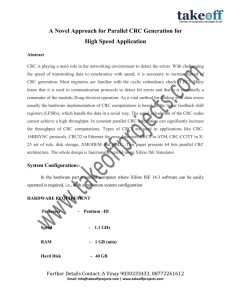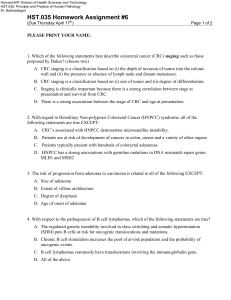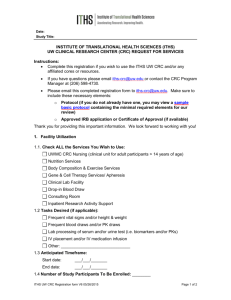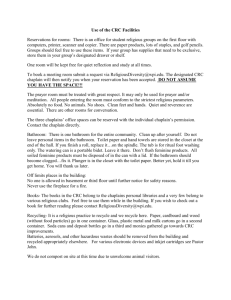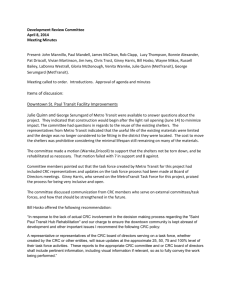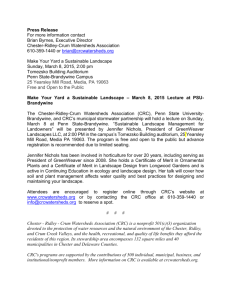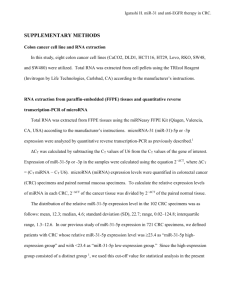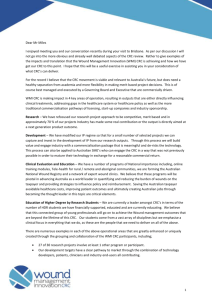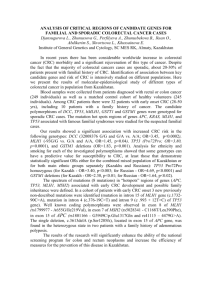Low molecular weight protein tyrosine phosphatase (LMW
advertisement
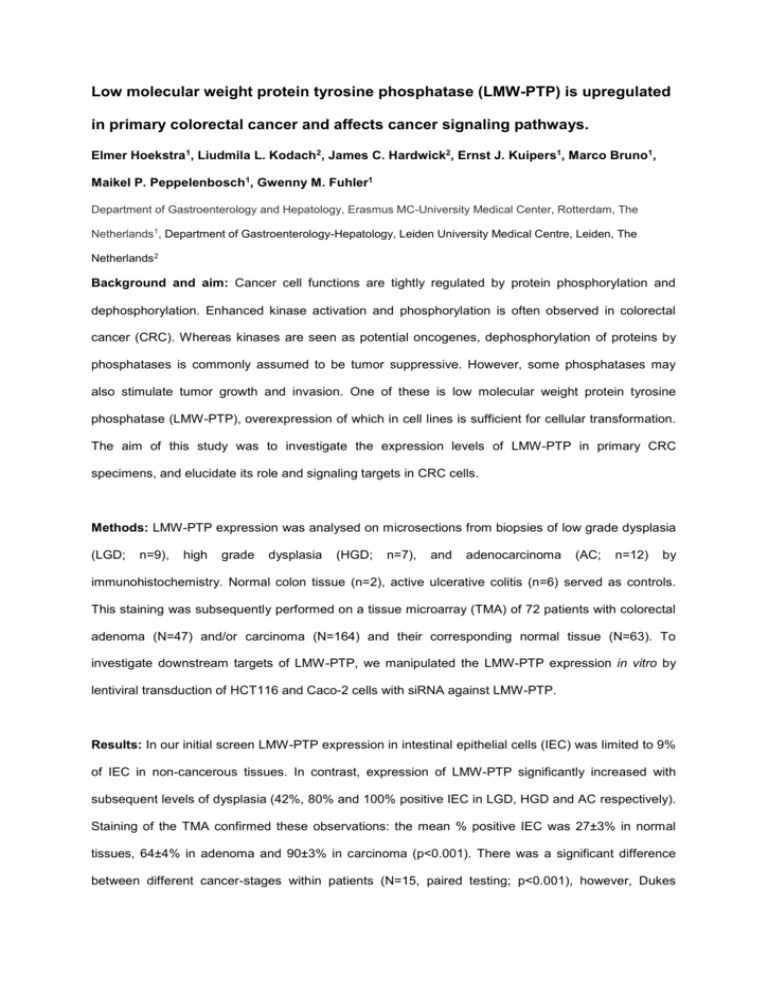
Low molecular weight protein tyrosine phosphatase (LMW-PTP) is upregulated in primary colorectal cancer and affects cancer signaling pathways. Elmer Hoekstra1, Liudmila L. Kodach2, James C. Hardwick2, Ernst J. Kuipers1, Marco Bruno1, Maikel P. Peppelenbosch1, Gwenny M. Fuhler1 Department of Gastroenterology and Hepatology, Erasmus MC-University Medical Center, Rotterdam, The Netherlands1, Department of Gastroenterology-Hepatology, Leiden University Medical Centre, Leiden, The Netherlands2 Background and aim: Cancer cell functions are tightly regulated by protein phosphorylation and dephosphorylation. Enhanced kinase activation and phosphorylation is often observed in colorectal cancer (CRC). Whereas kinases are seen as potential oncogenes, dephosphorylation of proteins by phosphatases is commonly assumed to be tumor suppressive. However, some phosphatases may also stimulate tumor growth and invasion. One of these is low molecular weight protein tyrosine phosphatase (LMW-PTP), overexpression of which in cell lines is sufficient for cellular transformation. The aim of this study was to investigate the expression levels of LMW-PTP in primary CRC specimens, and elucidate its role and signaling targets in CRC cells. Methods: LMW-PTP expression was analysed on microsections from biopsies of low grade dysplasia (LGD; n=9), high grade dysplasia (HGD; n=7), and adenocarcinoma (AC; n=12) by immunohistochemistry. Normal colon tissue (n=2), active ulcerative colitis (n=6) served as controls. This staining was subsequently performed on a tissue microarray (TMA) of 72 patients with colorectal adenoma (N=47) and/or carcinoma (N=164) and their corresponding normal tissue (N=63). To investigate downstream targets of LMW-PTP, we manipulated the LMW-PTP expression in vitro by lentiviral transduction of HCT116 and Caco-2 cells with siRNA against LMW-PTP. Results: In our initial screen LMW-PTP expression in intestinal epithelial cells (IEC) was limited to 9% of IEC in non-cancerous tissues. In contrast, expression of LMW-PTP significantly increased with subsequent levels of dysplasia (42%, 80% and 100% positive IEC in LGD, HGD and AC respectively). Staining of the TMA confirmed these observations: the mean % positive IEC was 27±3% in normal tissues, 64±4% in adenoma and 90±3% in carcinoma (p<0.001). There was a significant difference between different cancer-stages within patients (N=15, paired testing; p<0.001), however, Dukes stage or patient survival did not correlate with LMW-PTP expression. Knocking down LMW-PTP in CRC cells reduced phosphorylation of the EGF-receptor and β-catenin in vitro by approximately 50%. Conclusion: LMW-PTP expression is drastically upregulated in epithelial dysplasia and CRC. During transformation of IECs, LMW-PTP expression increases, suggesting a role for LMW-PTP in the pathogenesis of CRC. As LMW-PTP knockdown decreases EGFR and β-catenin phosphorylation, overexpression of LMW-PTP in CRC samples may contribute to the enhanced EGF and β-catenin signaling, known to play a role in CRC development. In conclusion, LMW-PTP is overexpressed in CRC, may function as an oncogene, and represent a compelling target for future therapy.


